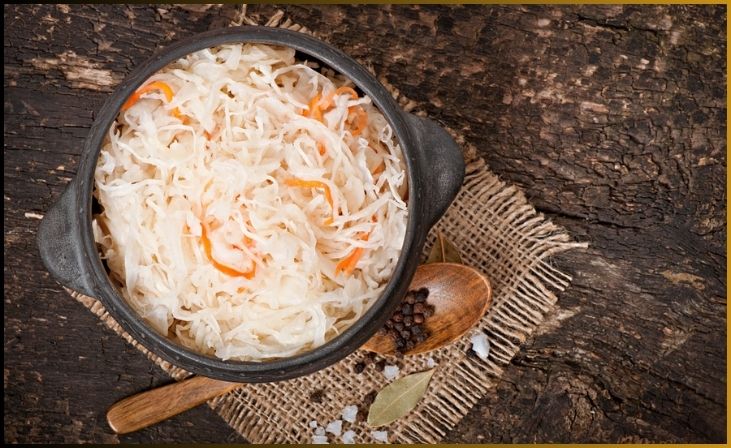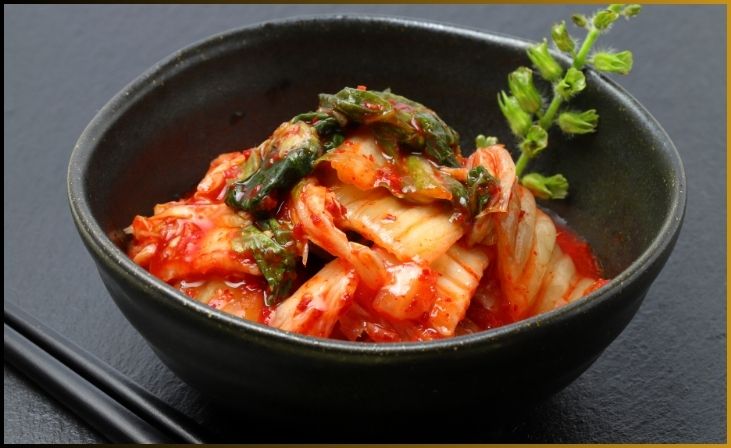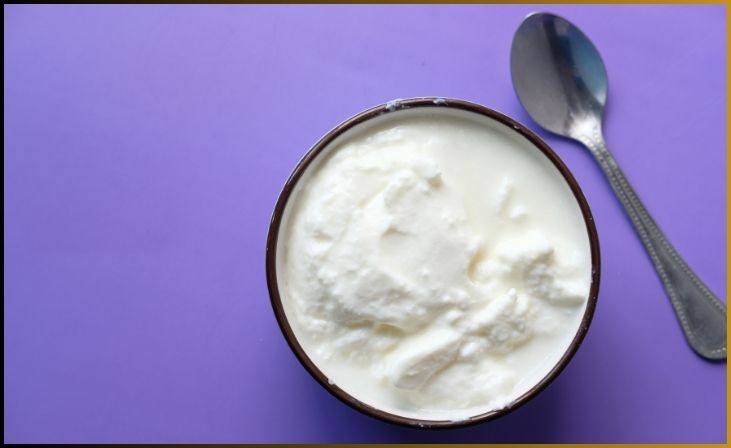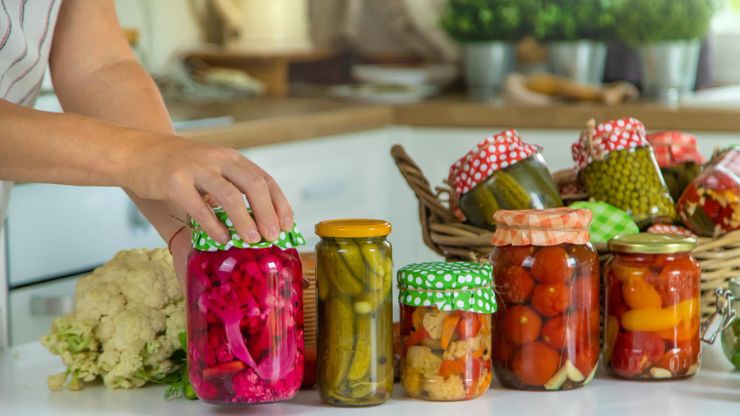Fermented Foods Recipes for Beginners – Are you looking to enhance your culinary repertoire and improve your gut health at the same time? Fermented foods might be the answer you’re looking for.
These age-old culinary creations are not only delicious but also packed with beneficial probiotics that can do wonders for your digestive system. If you’re new to the world of fermentation, fear not! In this blog, we’ll guide you through some simple and approachable fermented food recipes that are perfect for beginners.
Table of Contents
ToggleBenefits of Fermented Foods
Before we dive into the recipes, let’s briefly explore why fermented foods are becoming such a trend in the health and wellness community. Fermentation is a natural process where microorganisms like bacteria, yeast, and fungi break down food components like sugars and starches. This not only preserves the food but also produces beneficial compounds like probiotics that can support your gut health.
Including fermented foods in your diet can lead to improved digestion, enhanced nutrient absorption, and even a bolstered immune system. Probiotics found in fermented foods help balance the gut microbiome, contributing to overall well-being. Continue reading to learn more Fermented Foods Recipes for Beginners.
Getting Started with Fermentation
If you’re new to fermentation, there’s no need to worry about complex equipment or hard-to-find ingredients. You’ll mostly need glass jars, fresh vegetables, and basic pantry staples. It’s important to select high-quality, fresh ingredients to ensure the best results.
Safety Precautions
While fermentation is a safe and ancient preservation method, there are a few precautions you should take to ensure your fermented creations turn out as intended. Maintaining a clean and sterile environment throughout the fermentation process is crucial. Additionally, keep an eye out for signs of mold growth, and if any mold appears, it’s best to discard the batch.
Fermented Foods Recipes for Beginners
1. Sauerkraut

Sauerkraut is a classic fermented dish made from shredded cabbage and salt. Here’s how you can make it:
Ingredients:
- 1 head of cabbage, finely shredded
- 1 tablespoon of sea salt
Instructions:
- In a large bowl, combine the shredded cabbage and salt.
- Massage and knead the mixture until the cabbage becomes watery and limp.
- Pack the cabbage tightly into a clean glass jar, ensuring there’s enough liquid to cover the cabbage.
- Press the cabbage down with a clean weight or lid, ensuring it stays submerged in its own liquid.
- Seal the jar with a lid and allow it to ferment at room temperature for about 1-2 weeks. Taste it along the way to find your preferred level of tanginess.
Also Read: Fermented Foods for Improved Digestion
2. Kimchi

Kimchi is a spicy Korean fermented dish that’s both flavorful and versatile.
Ingredients:
- 1 Napa cabbage, cut into bite-sized pieces
- 1 Korean radish, julienned
- 1/4 cup of coarse sea salt
- 2 tablespoons of Korean red pepper flakes
- 1 tablespoon of minced garlic
- 1 teaspoon of grated ginger
- 1 tablespoon of fish sauce (optional)
Instructions:
- Dissolve the sea salt in a bowl of water. Soak the cabbage and radish in the brine for 2 hours.
- Rinse the vegetables thoroughly and drain.
- In a separate bowl, mix the red pepper flakes, garlic, ginger, and fish sauce to form a paste.
- Coat the cabbage and radish with the paste, wearing gloves to protect your hands from the spice.
- Pack the mixture into a clean glass jar, pressing it down to remove air bubbles.
- Seal the jar with a lid and allow it to ferment at room temperature for 3-5 days before transferring it to the refrigerator.
Keep reading for more Fermented Foods Recipes for Beginners.
Don't just scroll, subscribe!
BuzzTrail's unique web-stories are the cure for boredom you've been waiting for.
3. Pickles

Homemade pickles are a great introduction to fermentation, and you only need a few ingredients.
Ingredients:
- 1 pound of pickling cucumbers
- 2 tablespoons of pickling salt
- Fresh dill, garlic, and spices (optional)
Instructions:
- Wash the cucumbers and remove the blossom end.
- Dissolve the pickling salt in water to create a brine solution.
- Place the cucumbers in a clean jar, along with any optional herbs and spices.
- Pour the brine over the cucumbers, ensuring they are fully submerged.
- Seal the jar with a lid and let it sit at room temperature for about 1-2 weeks, tasting occasionally to determine the level of sourness you prefer.
4. Kombucha

Kombucha is a popular fermented tea beverage that’s both refreshing and beneficial for your gut.
Ingredients:
- 4 black tea bags
- 1 cup of granulated sugar
- SCOBY (Symbiotic Culture Of Bacteria and Yeast)
- 8 cups of water
Instructions:
- Boil the water and steep the tea bags for about 5 minutes.
- Remove the tea bags and stir in the sugar until dissolved. Allow the tea to cool.
- Transfer the cooled tea to a clean glass jar.
- Gently place the SCOBY on the surface of the tea.
- Cover the jar with a cloth or paper towel and secure it with a rubber band.
- Let the mixture ferment at room temperature for 7-14 days, depending on your taste preferences.
- Once the desired flavor is reached, remove the SCOBY and store the kombucha in the refrigerator.
5. Yogurt

Making your own yogurt is surprisingly easy and rewarding.
Ingredients:
- 4 cups of milk (any type you prefer)
- 2 tablespoons of yogurt with live active cultures
Instructions:
- Heat the milk in a saucepan until it reaches 180°F (82°C), then cool it to 110°F (43°C).
- In a small bowl, mix the yogurt and a small amount of the cooled milk to create a smooth paste.
- Combine the yogurt paste with the remaining cooled milk.
- Pour the mixture into clean glass jars.
- Incubate the jars in a warm place (such as an oven with the light on) for 6-12 hours, until the yogurt thickens.
- Refrigerate the yogurt before enjoying it.
Tips for Success
After learning Fermented Foods Recipes for Beginners, here are some tips to get successful.
- Maintain a consistent temperature throughout the fermentation process. Ideal temperatures vary depending on the food, but generally, aim for around 65-75°F (18-24°C).
- Keep your fermentation vessels away from direct sunlight to prevent heat buildup.
- Ensure your jars are properly sealed to prevent contamination from outside air.
- Trust your senses. If something smells or looks off, it’s better to be safe and discard the batch.
Troubleshooting
Fermentation can sometimes be unpredictable, but most issues have simple solutions:
- Mold: If you notice mold on the surface of your ferment, it’s best to discard the entire batch.
- Funky Smells: While some fermented foods have strong odors, anything foul or putrid could indicate spoilage.
- Texture Changes: Sometimes textures change during fermentation, like vegetables softening or liquids thickening. These are often normal signs of the fermentation process.
Conclusion
In this blog, we have discussed about Fermented Foods Recipes for Beginners. Embarking on the journey of fermentation might seem daunting at first, but it’s a rewarding endeavor that offers both culinary delights and potential health benefits.
By starting with these easy fermented food recipes, you’ll be well on your way to enjoying homemade sauerkraut, kimchi, pickles, kombucha, and yogurt.
Remember, experimentation is key, so feel free to tweak recipes and ingredients to suit your taste preferences. Happy fermenting!
FAQs
Is fermentation safe for beginners?
Is fermentation safe for beginners?
Absolutely! With proper hygiene and basic guidelines, beginners can enjoy the benefits of homemade fermented foods.
Can I adjust the flavors in these recipes?
Can I adjust the flavors in these recipes?
Certainly! Feel free to add spices, herbs, or tweak ingredients to create unique and personalized fermented dishes.

